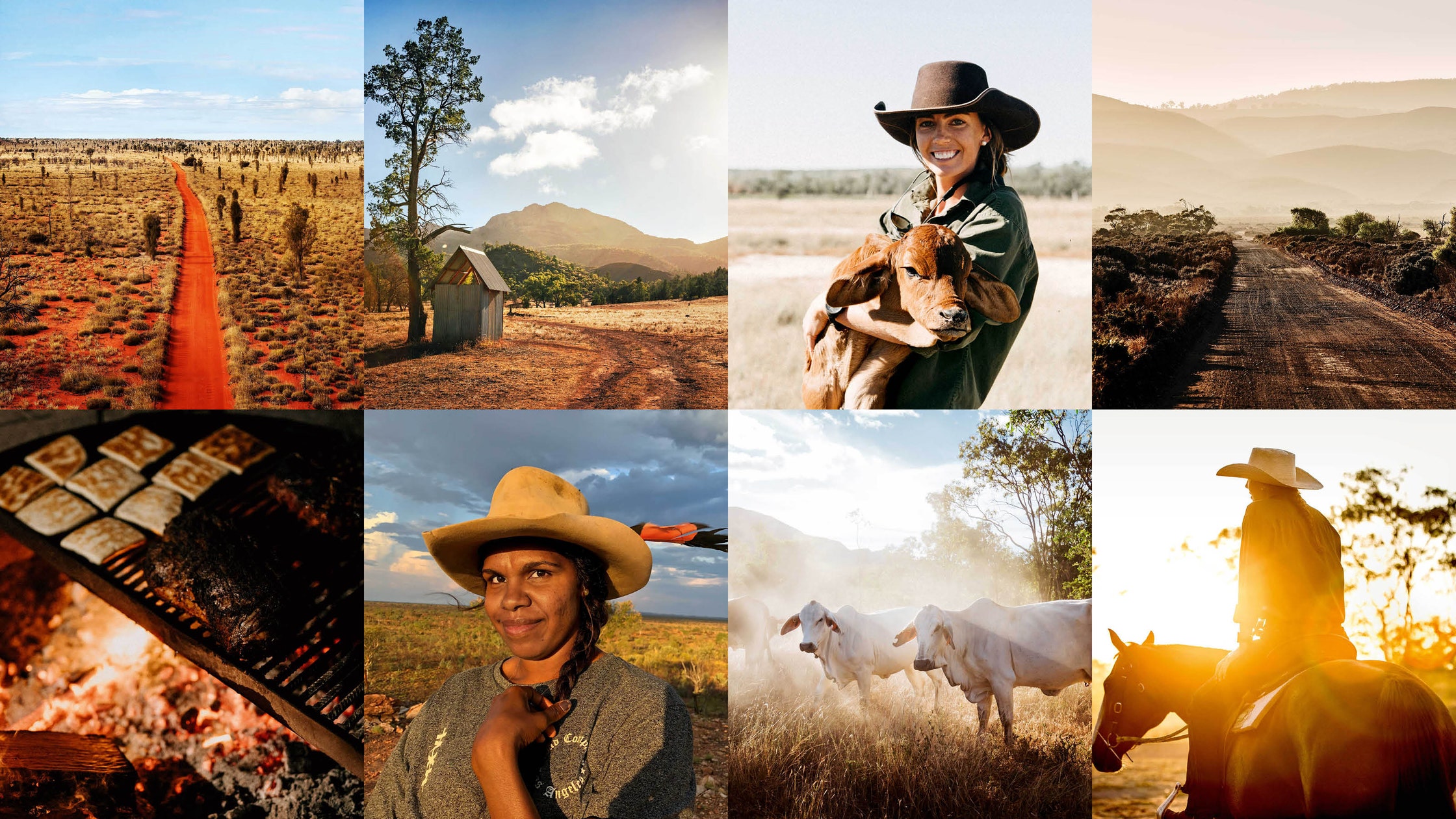A Pioneering All-Female Crew Changing the Face of Australian Agriculture
Australia’s vast heartland is one of the last truly wild areas on earth – running from the Kimberley across to Far North Queensland, from the Top End down to the Flinders Ranges – encompassing 70 percent of the country, an area roughly half the size of Europe but home to fewer than 800,000 people.
There is a deep and ancient Aboriginal connection to these parts, but more recent mythology has long been centred around the romanticised fables of rugged men: Ned Kelly bushranging across frontier Victoria; The Man from Snowy River in pursuit of a colt that had joined a herd of brumbies; Crocodile Dundee killing snakes with his bare hands. While hardy women have always played a role, they’ve often been hidden in the landscape. It was notably only in 1994 that females in Australia won the right to be named as a farmer or stockperson, and since then fresh generations have made their mark on this red-brown earth, which today demands adaptability amidst new challenges.
Now a field guide at Arkaba in South Australia, Melissa Robertson swapped the bustling life of Melbourne for the solitude of the outback after discovering the vibrant, flame-colored Kimberley. She shared, “I fell for another world and life, meeting phenomenal people with whom I forged genuine connections, something I had lost in the city.” After years working on various cattle stations, Robertson transitioned into a full-time conservation role at Arkaba, a former sheep station on a 60,000-acre wildlife conservancy. Her long days involve trekking and leading safaris, enlightening visitors about the quirky wildlife that inhabits the region, from the mousey fat-tailed dunnart to spotty-backed western quolls.
“Not a lot of people get to experience the authentic outback and I love being able to share it,” says Grace Mitchelson, who left her job as a jillaroo to guide at Bullo River Station, a cattle ranch featuring a Sibella Court-designed guest lodge in the East Kimberley. Growing up on a farm in Tasmania, Mitchelson acknowledges, “The bush is in my blood.” While leading tours, she also engages in hands-on activities, from repairing fences to managing the processing of approximately 4,000 cattle across 500,000 acres. “It’s a power role. You are strong and can do everything the guys do,” she adds.
In Far North Queensland, the siren call of station life resonates at Mount Mulligan Lodge, another cattle ranch that recently expanded its accommodations. Here, Jody Westbrook, a childhood farm girl, has fully embraced her role as manager. She remarks, “For me, living in the middle of nowhere and focusing on what I’m doing without distractions is what I enjoy.” The outback is not only evolving in its acceptance of women; climate change presents new challenges, threatening the delicate balance with increasing wildfires, floods, and drought. “The mindset today is very much geared towards local, sustainable, and regenerative practices, and demonstrating the new ways of the bush is truly special,” says Westbrook.
Tauri Simone, leveraging her Koa heritage and years of experience at Barwidgee Station in Western Australia, recognizes that female farmhands have historically been made invisible by government policy, but things are shifting. Trailblazers like Darrylin Gordon, who grew up on Ngunjirirri Aboriginal Corporation-operated Lamboo Station in the Kimberley, are making significant contributions. Trained by family members, she asserts that no one perceives her as incapable. “I love station life; it is where I’ve learned my skills and what has made me who I am,” shares Gordon. After receiving the Western Australian AgriFutures Rural Women’s Award in 2018, she now conducts training programs to impart these vital skills to the local community.
A Day in the Field
Spot the Cattle-Rearing Wild-Roving Aussie Stockwomen
The day starts before sunrise, fueled by black coffee and anticipation for first light, which signals the start of work before the heat of 45°C sets in. Typically in the saddle for 12 hours, jillaroos wear a uniform of well-loved RM Williams boots, Ringers Western shirts, wide-brimmed hats, and bootcut jeans. Their rigorous tasks include processing cattle, constructing temporary yards, and driving Land Cruisers outfitted with camping gear for emergencies. They take brief breaks for a no-nonsense sandwich for lunch. After a long day, they unwind with an ice-cold beer and hearty dinner before lights-out at 8 PM in a simple accommodation. Days off are opportunities to explore new bush territory, swim in secluded waterholes, and participate in rodeos. Periodic visits to nearby towns allow for essential Wi-Fi and phone connectivity, reminding them of the vastness of the real outback, which begins where the signal fades.




